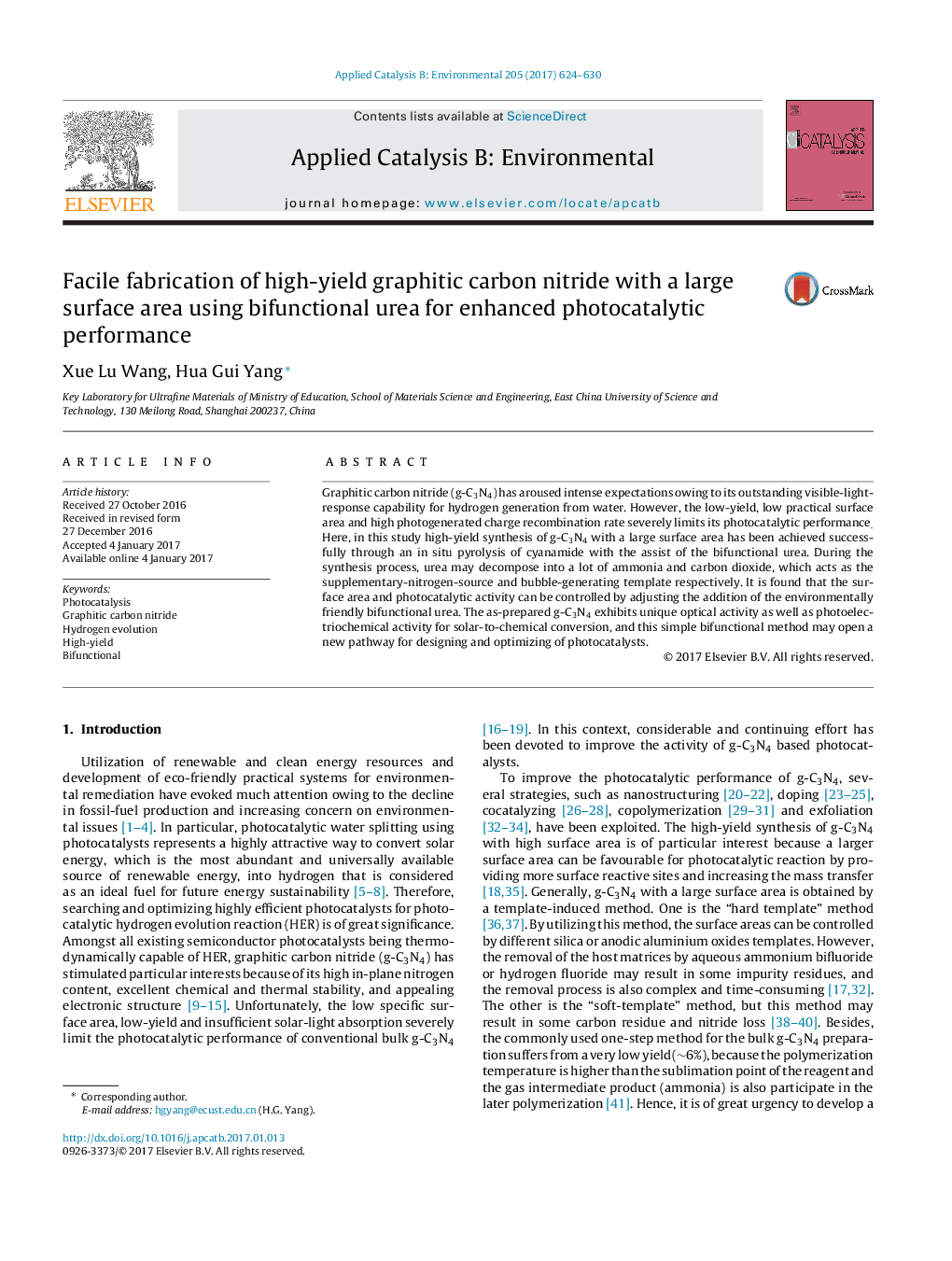| Article ID | Journal | Published Year | Pages | File Type |
|---|---|---|---|---|
| 6454405 | Applied Catalysis B: Environmental | 2017 | 7 Pages |
â¢High-yield synthesis of g-C3N4 with a large surface area is achieved successfully.â¢Generated NH3 and CO2 from urea act as the N-source and bubble-generating template.â¢The BET and photocatalytic activity can be controlled by the bifunctional urea.â¢The best sample CN-1.5 experts 10 times higher performance than the bulk g-C3N4.â¢This simple method may open a new pathway for designing and optimizing of catalysts.
Graphitic carbon nitride (g-C3N4) has aroused intense expectations owing to its outstanding visible-light-response capability for hydrogen generation from water. However, the low-yield, low practical surface area and high photogenerated charge recombination rate severely limits its photocatalytic performance. Here, in this study high-yield synthesis of g-C3N4 with a large surface area has been achieved successfully through an in situ pyrolysis of cyanamide with the assist of the bifunctional urea. During the synthesis process, urea may decompose into a lot of ammonia and carbon dioxide, which acts as the supplementary-nitrogen-source and bubble-generating template respectively. It is found that the surface area and photocatalytic activity can be controlled by adjusting the addition of the environmentally friendly bifunctional urea. The as-prepared g-C3N4 exhibits unique optical activity as well as photoelectriochemical activity for solar-to-chemical conversion, and this simple bifunctional method may open a new pathway for designing and optimizing of photocatalysts.
Graphical abstractDownload high-res image (106KB)Download full-size image
